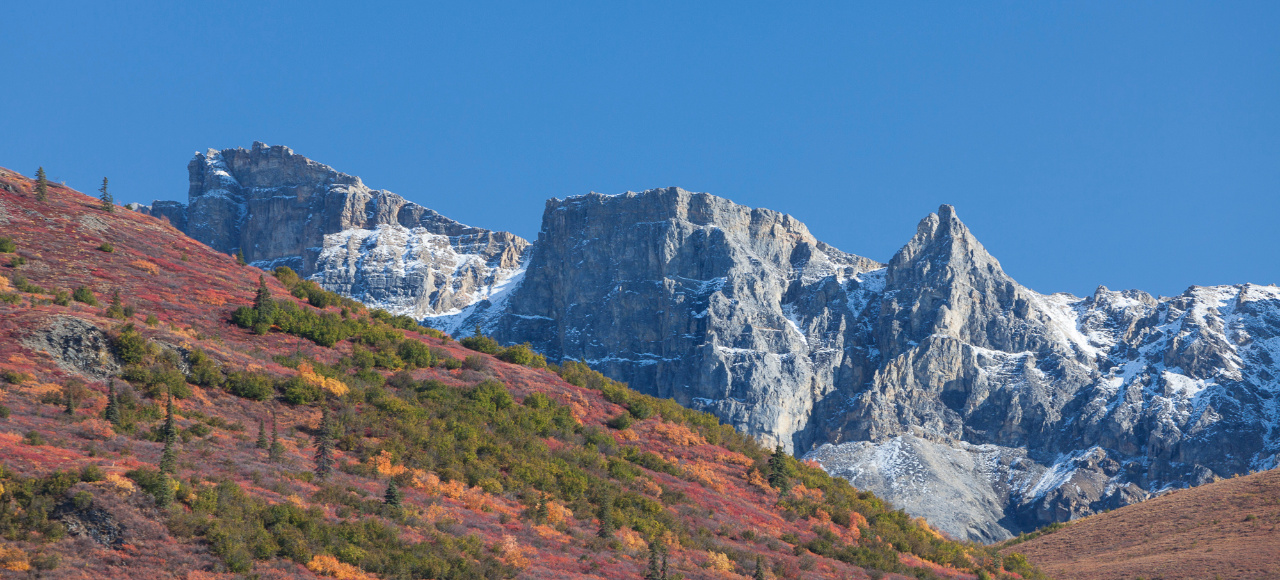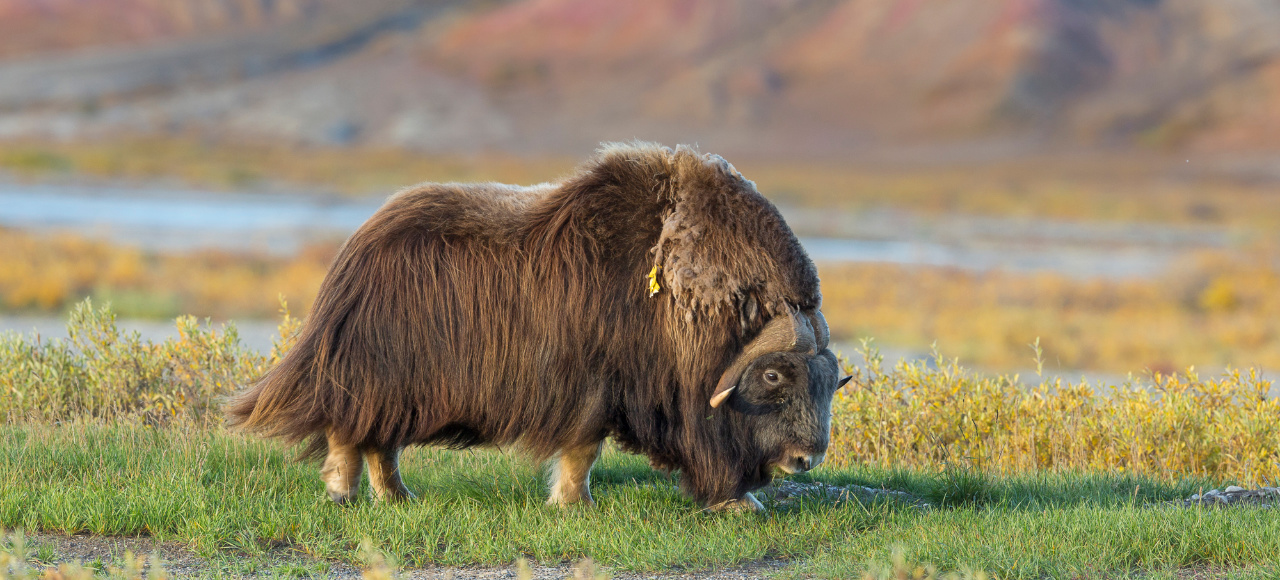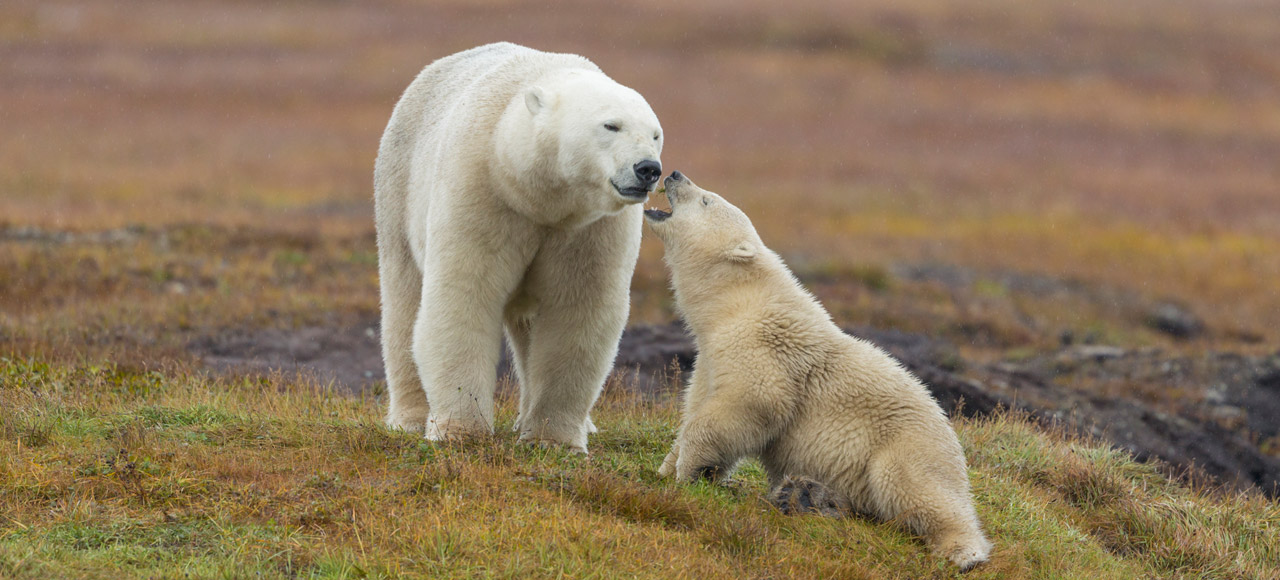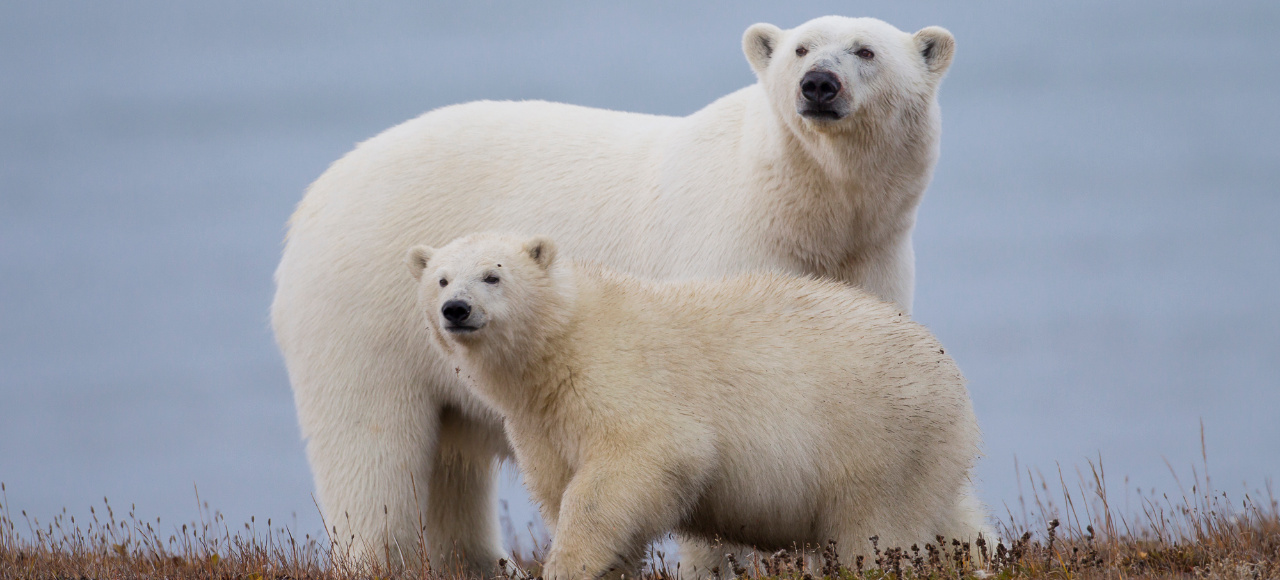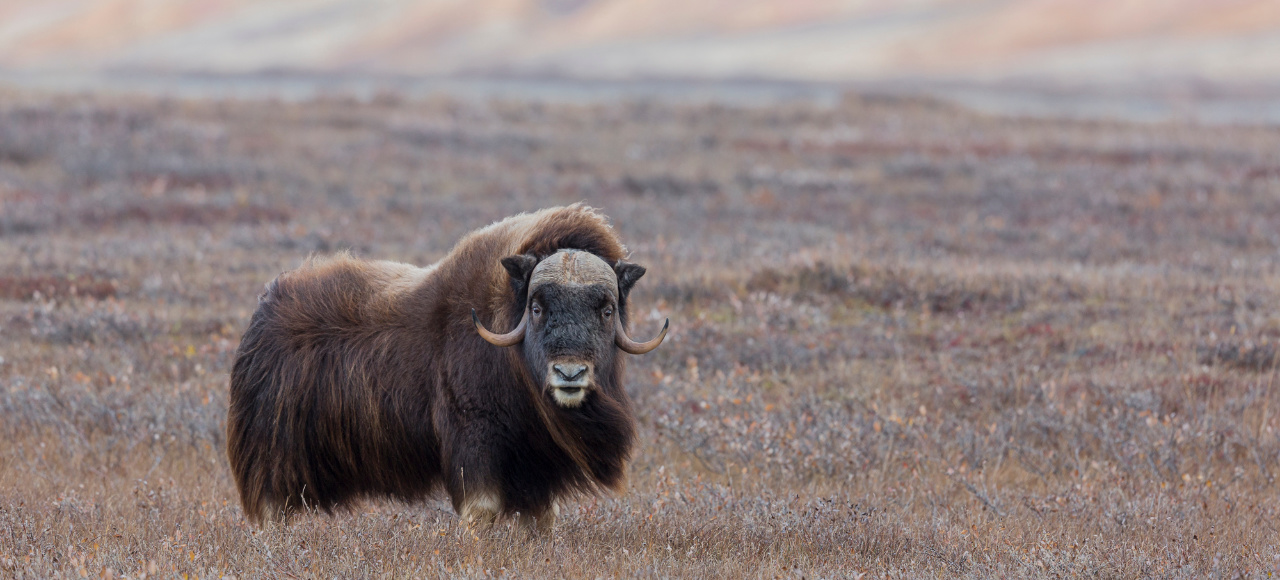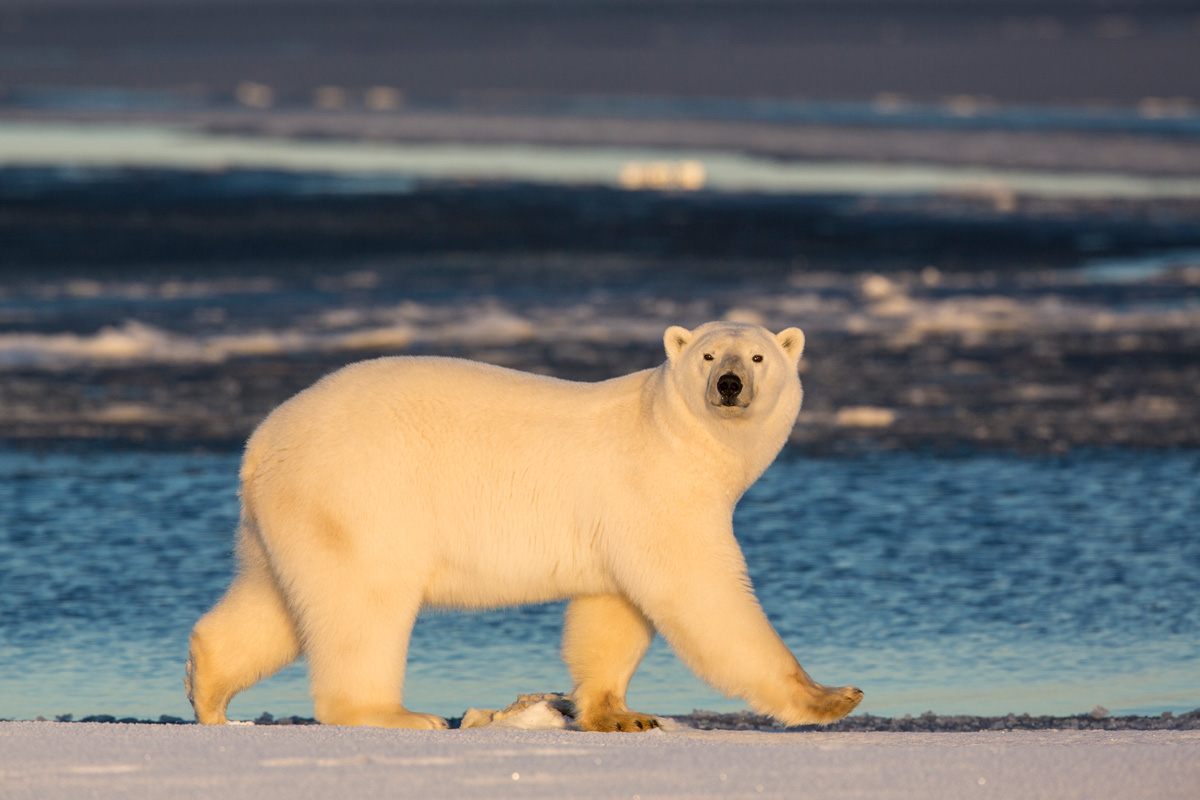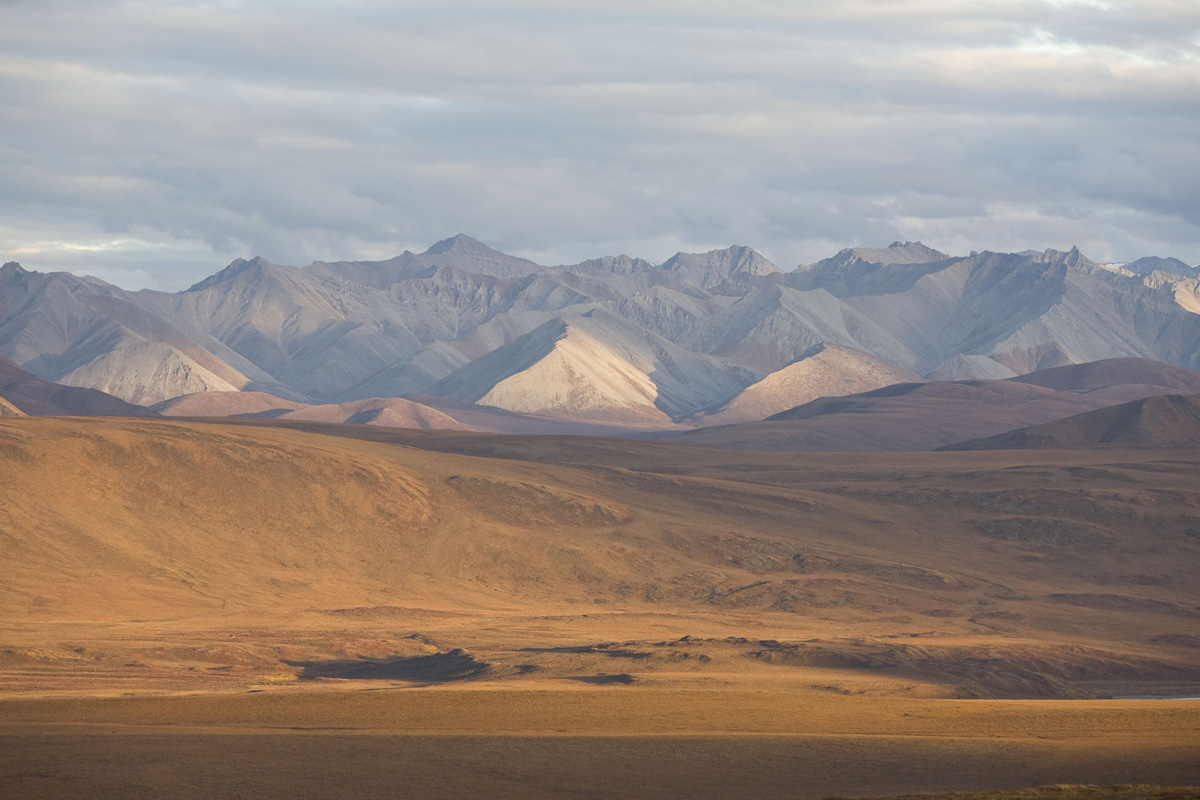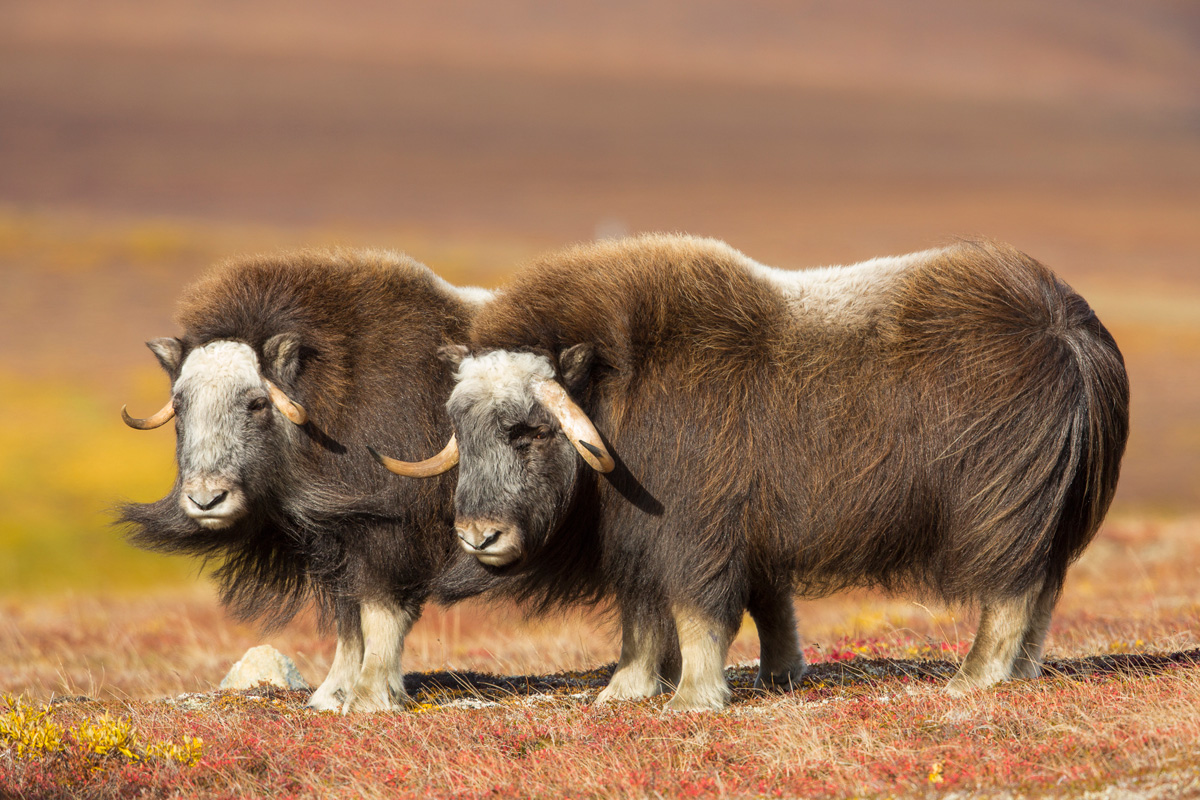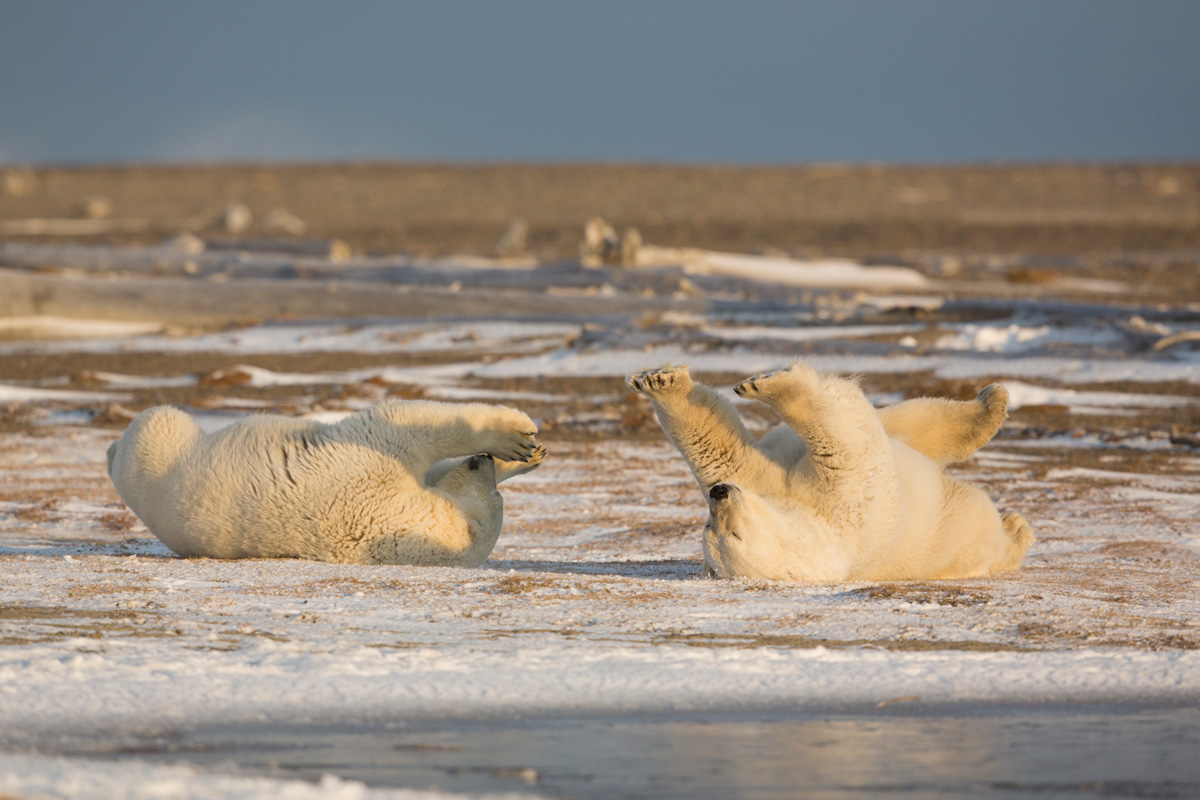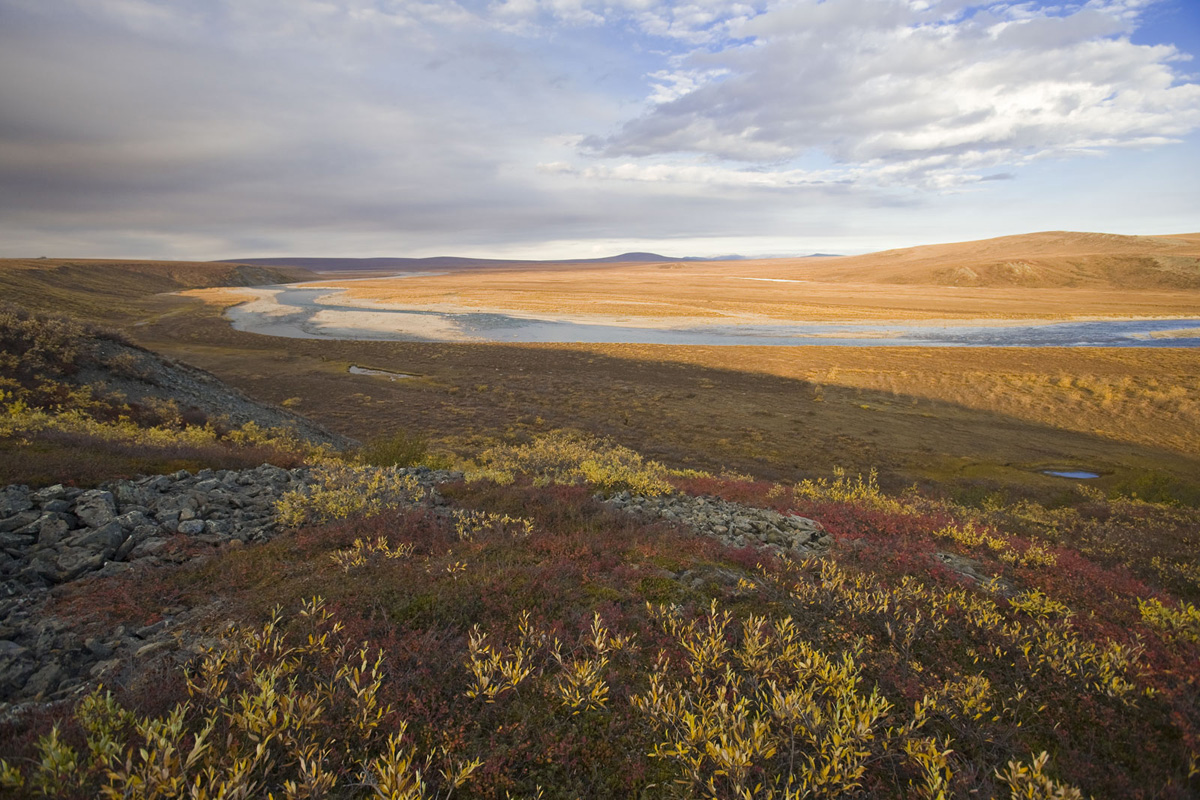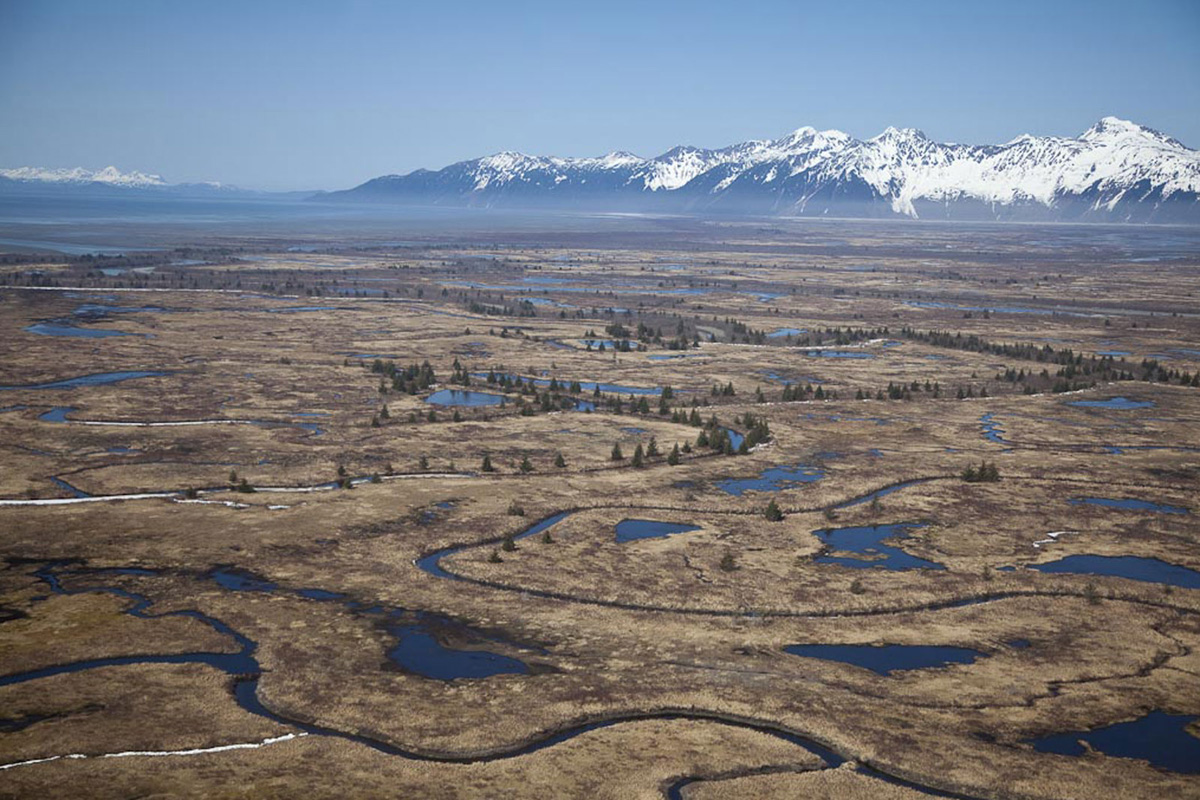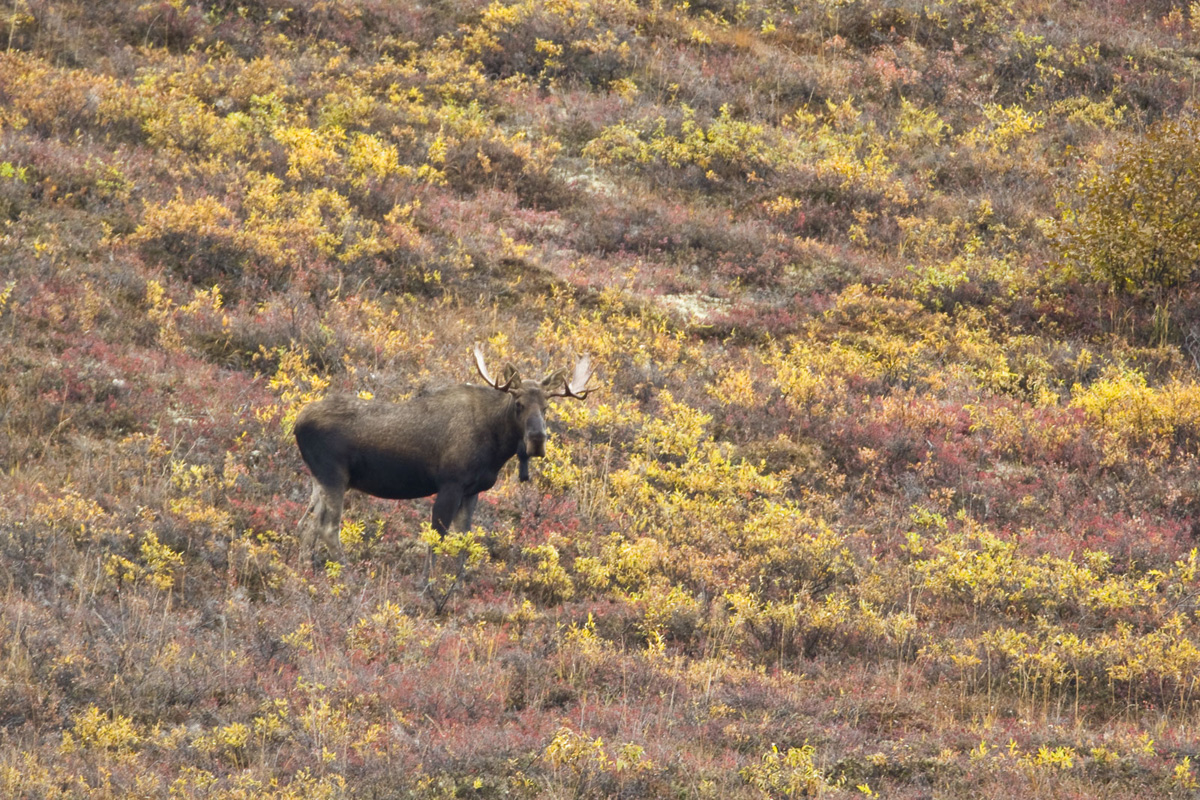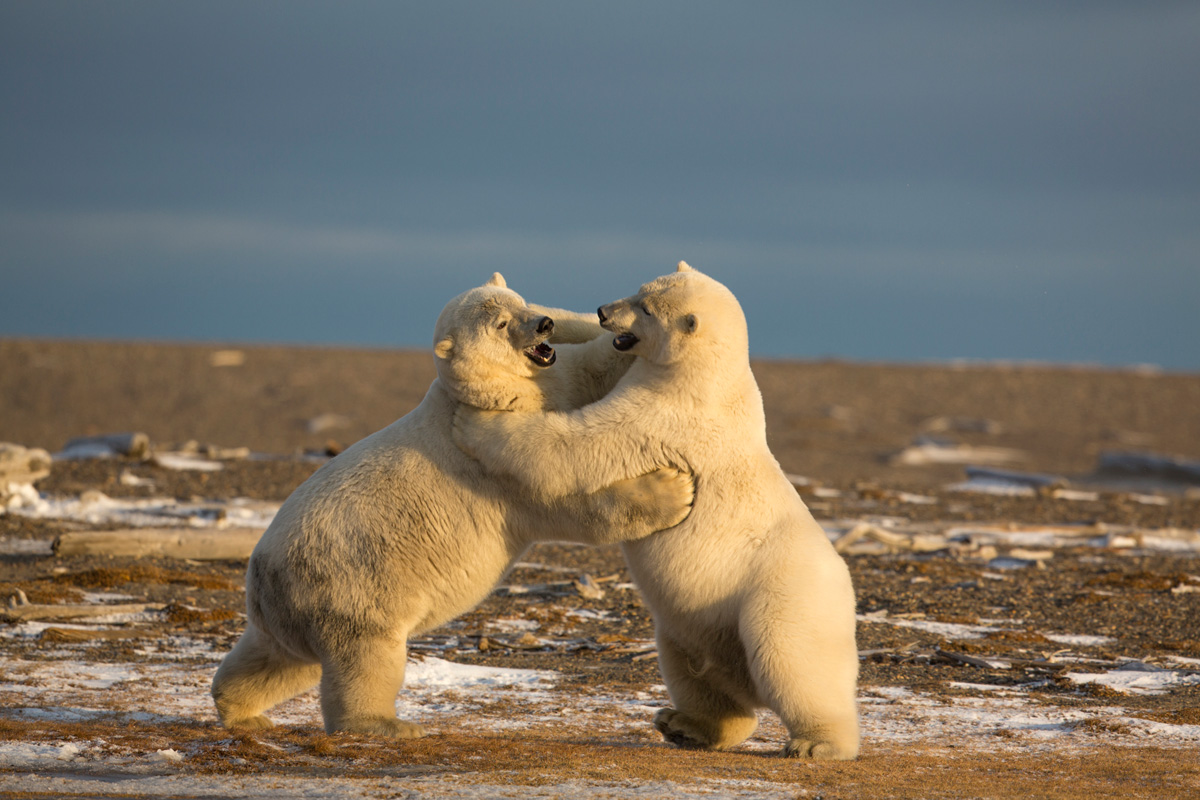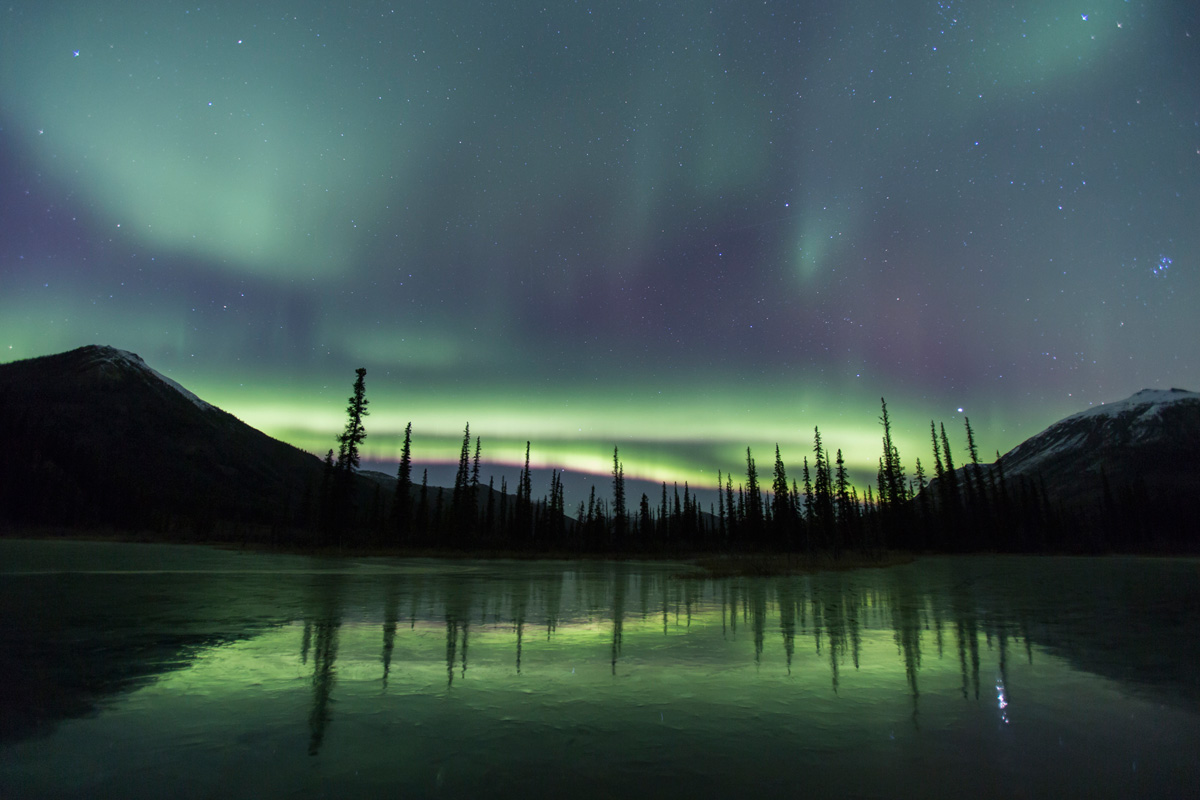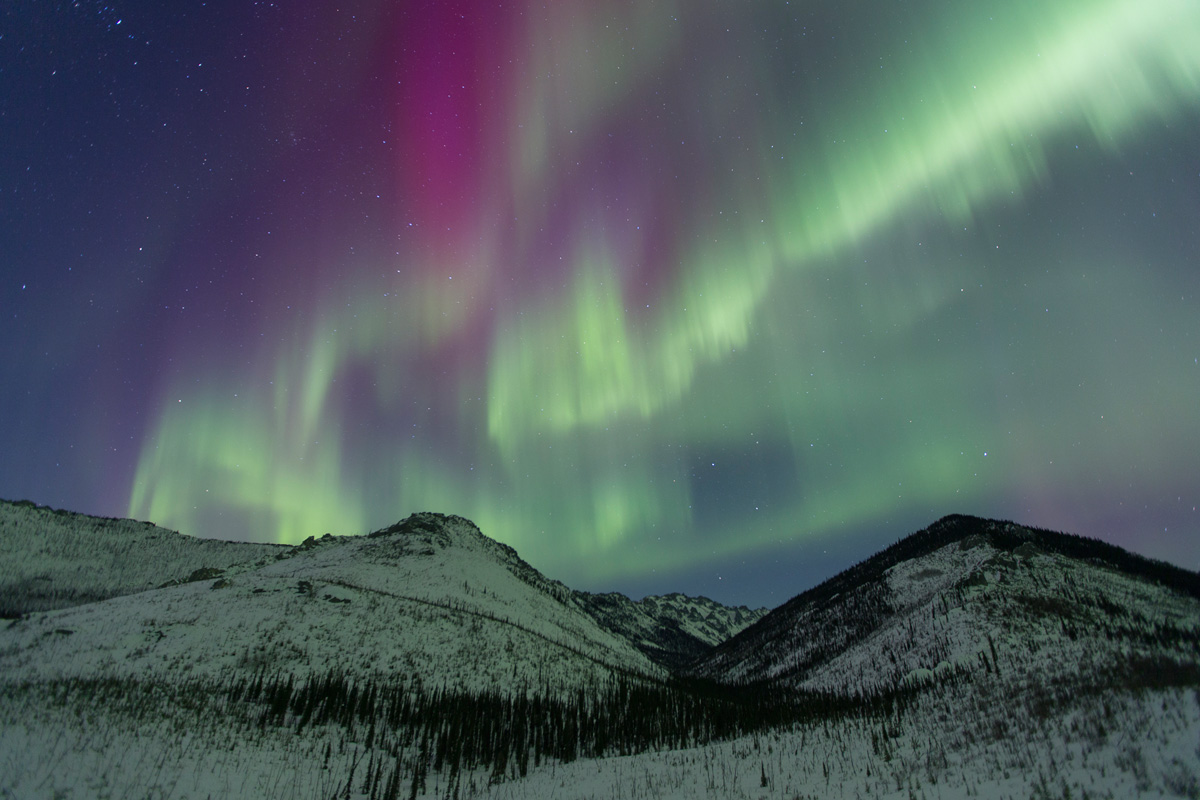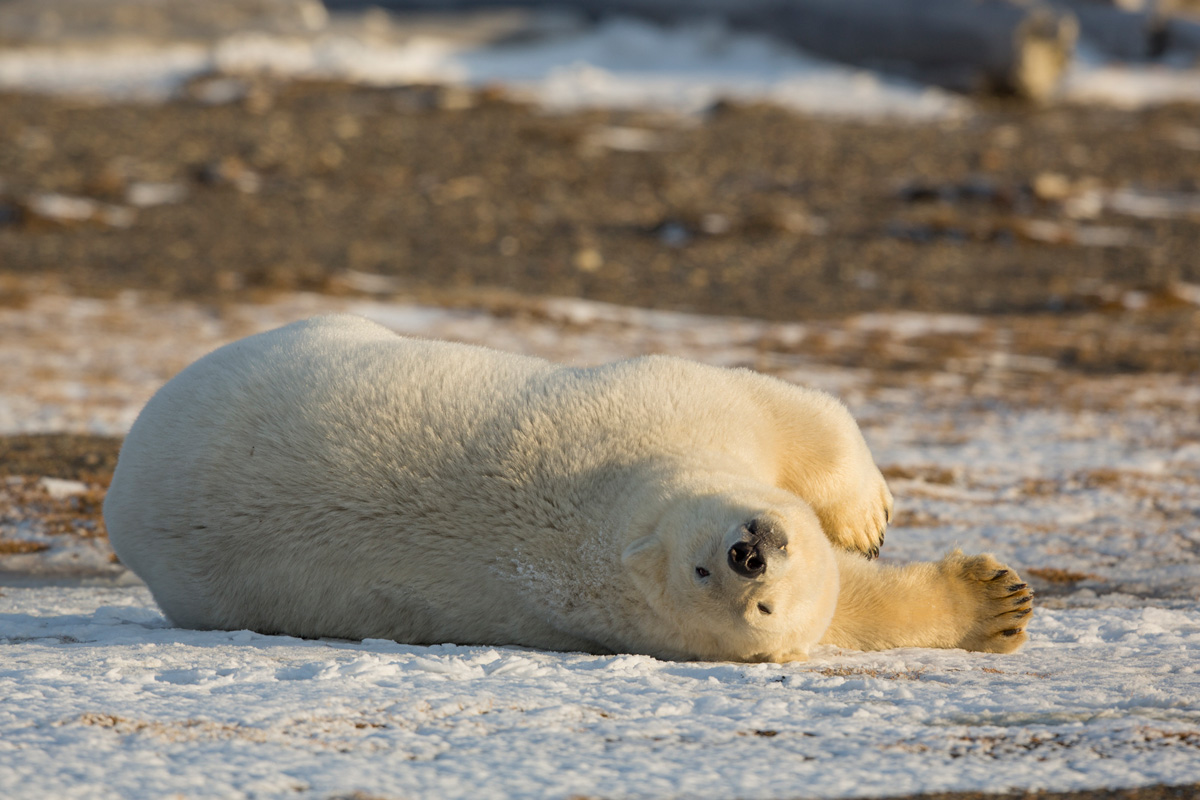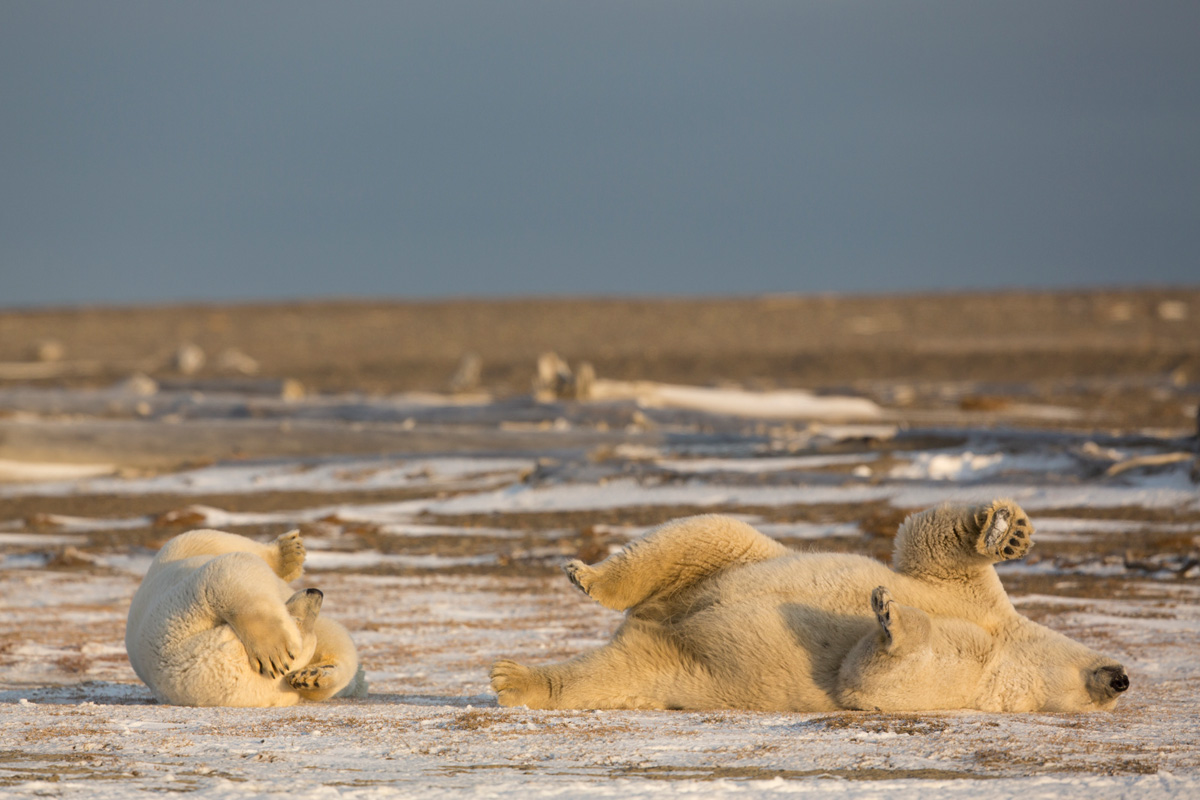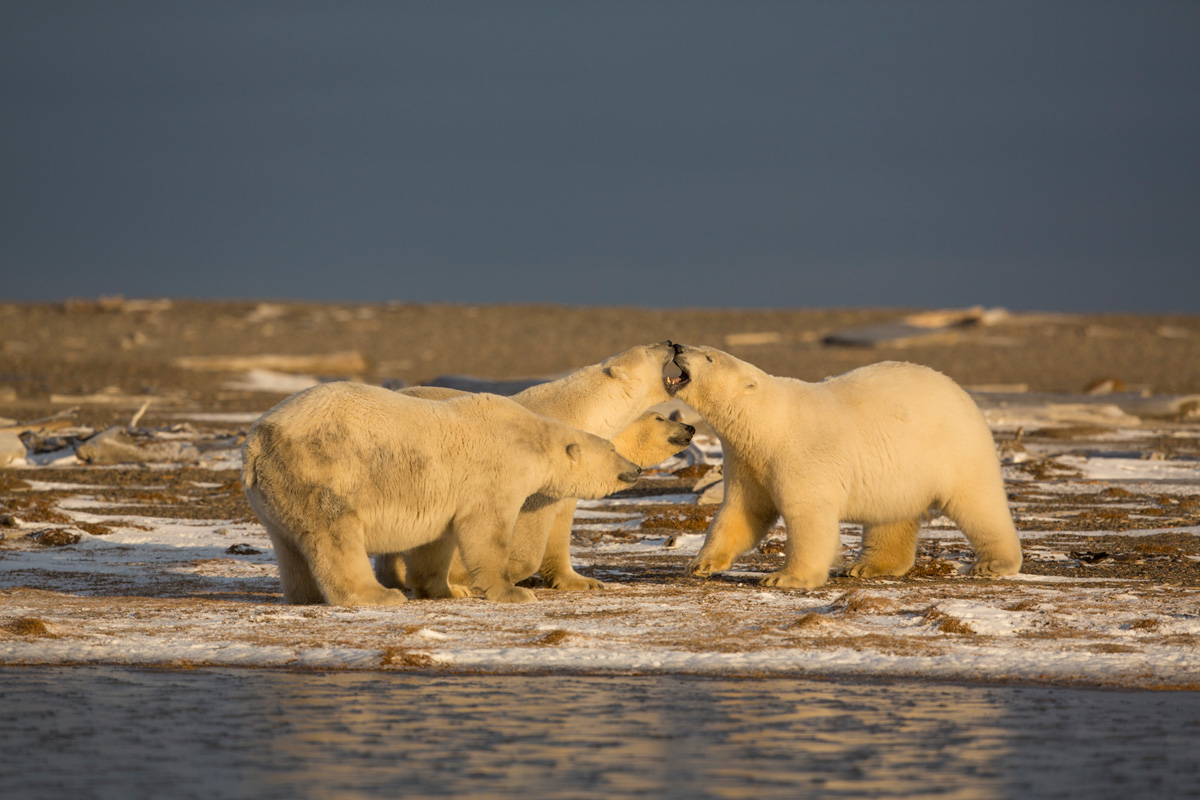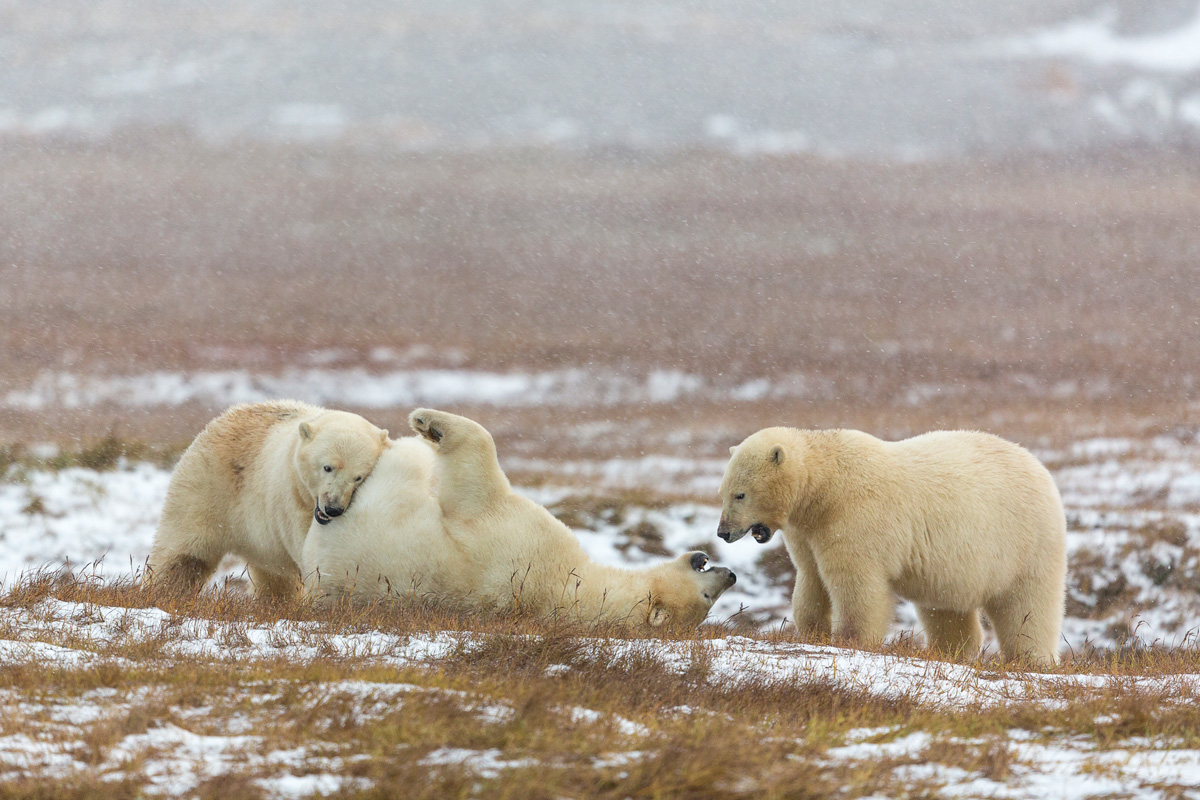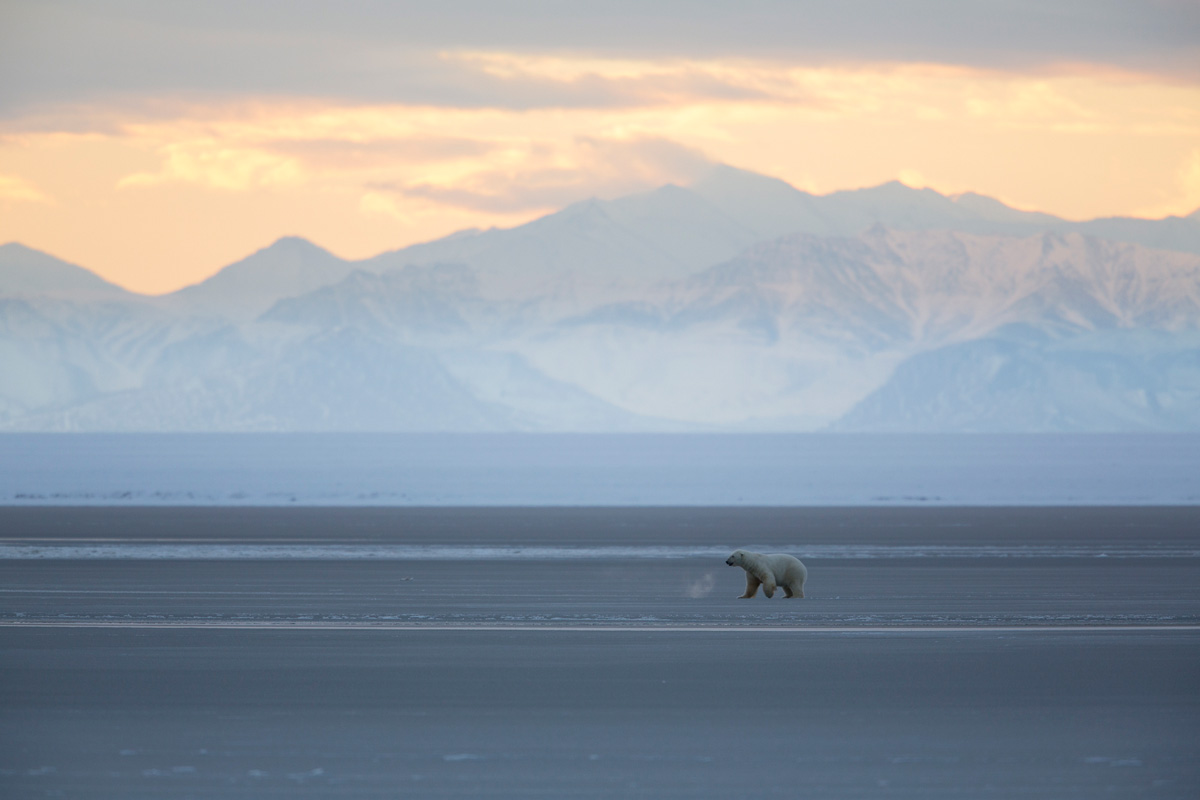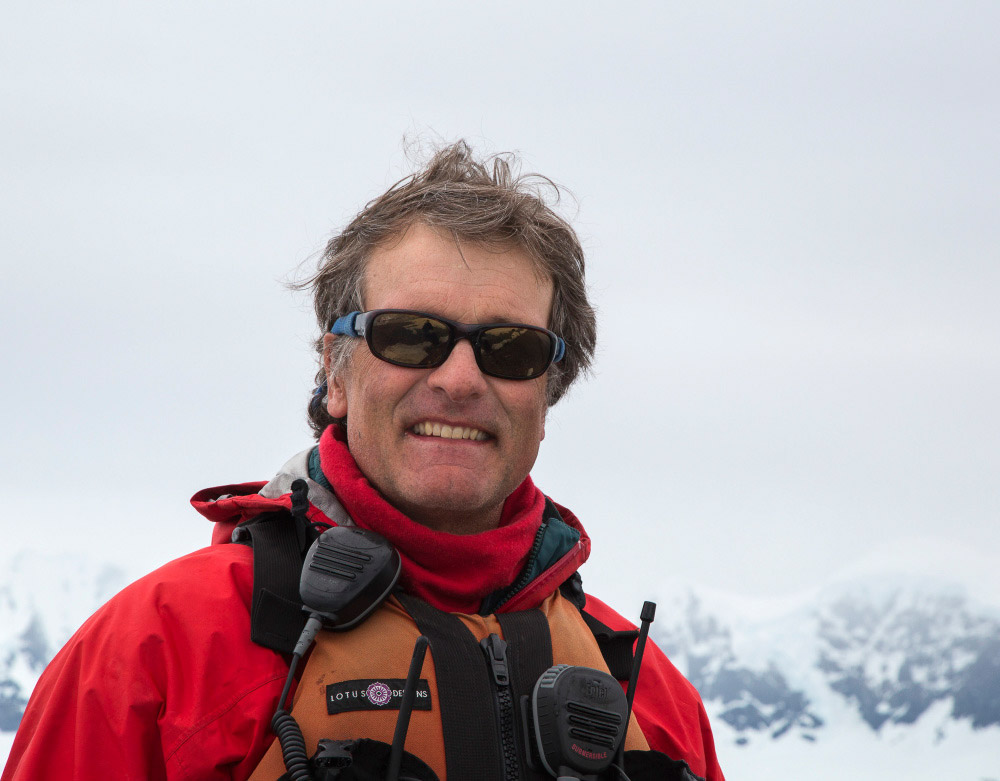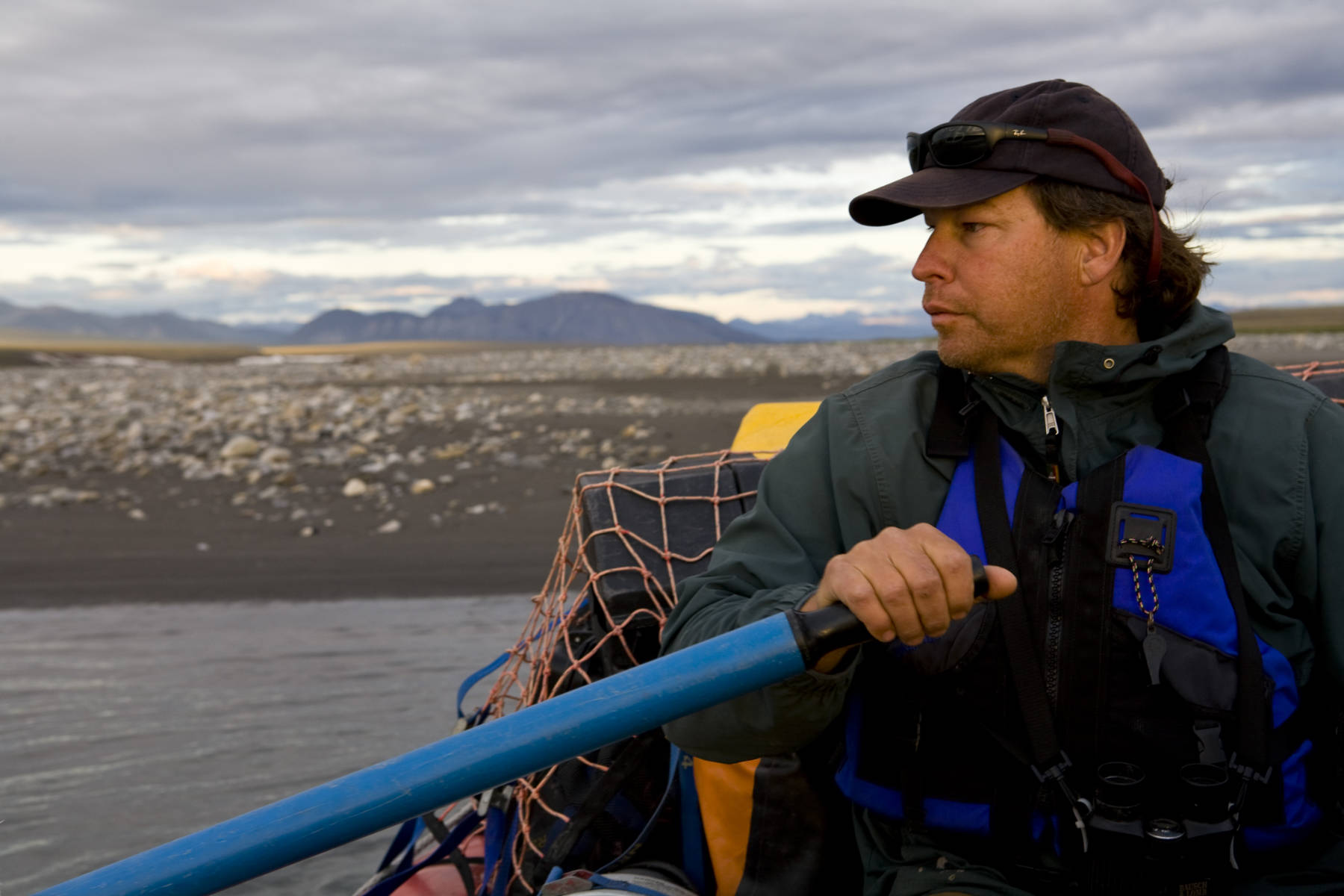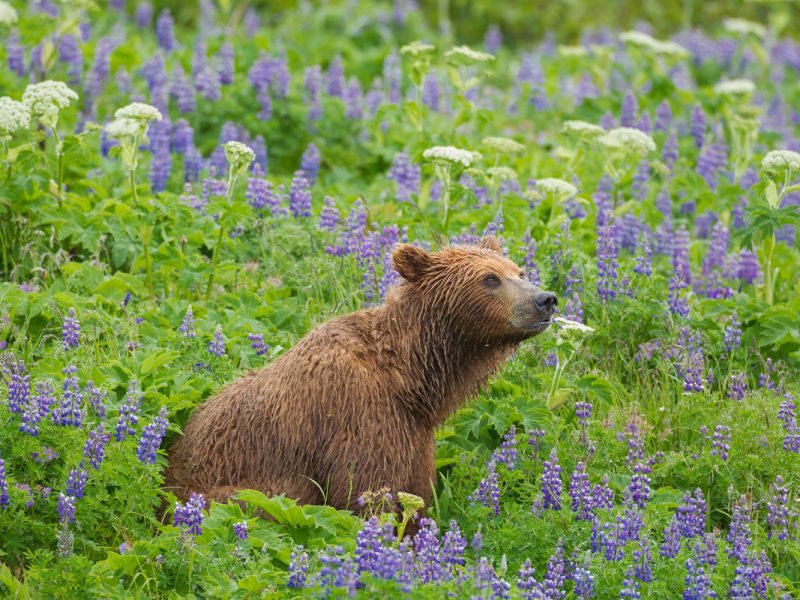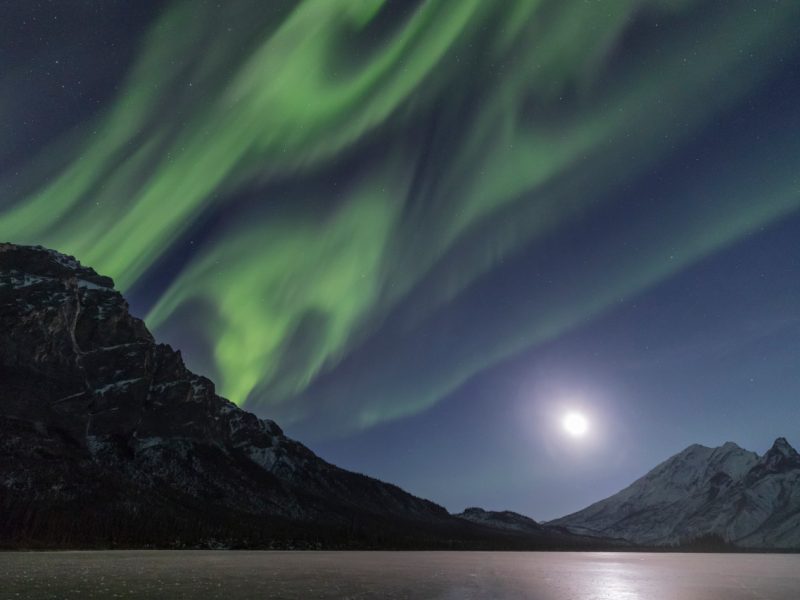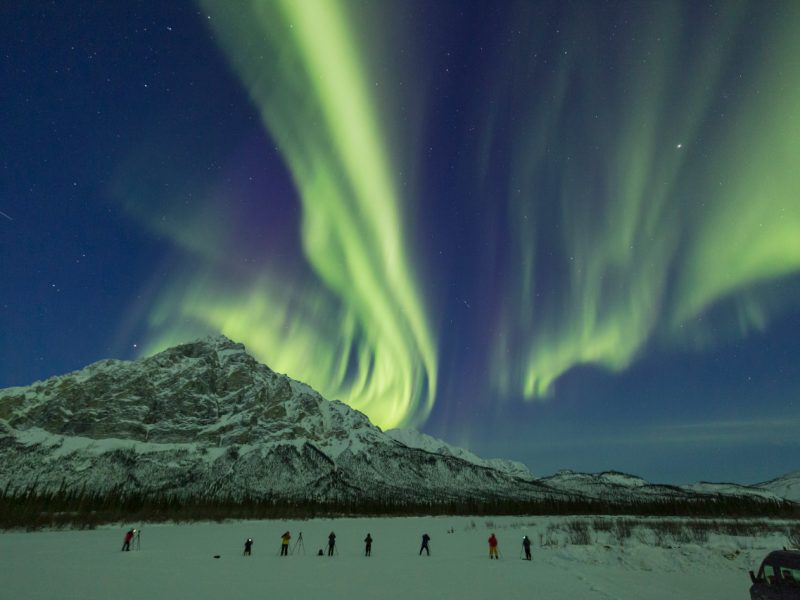Arctic Alaska Photo Tour - Autumn
Explore the remote arctic of Alaska during the most spectacular time of year when fall colors blanket the tundra and wildlife is busy preparing for winter. Spend nights photographing the magical aurora borealis and days immersed in the Arctic autumn. After a night in Alaska’s Golden Heart City Fairbanks, get off the beaten path, without crowds, as you travel north of the Arctic Circle in the Brooks Range to the historic gold mining community of Wiseman. Spend days searching for iconic arctic animals such as the gray wolf, moose, caribou, and grizzly and brown bears, while you marvel at the aurora borealis by night. Travel north on the famous Dalton Highway over the highest road pass in Alaska, to the spectacular arctic coastal plain, while looking for muskoxen, owls, falcons and other wildlife on the open tundra. Spend a night in a Prudhoe Bay oilfield hotel, before flying to an Iñupiaq village to observe and photograph the Arctic’s top predator, the polar bear. Three days of boat and land excursions give you plenty of time to watch the bears in their environment, on the Arctic Ocean coast.
Return to Prudhoe Bay and travel south, returning to Wiseman for two more days of exploration and photography on the south side of the Brooks Range by day and two more nights to watch for the northern lights. Take home unforgettable memories and photographs under the expert guidance of longtime Alaska resident, naturalist, and professional photographer Ron Niebrugge.
This tour is the ultimate adventure for those looking to capture polar bears and arctic wildlife in their most intimate setting. In addition spend your nights observing and photographing the magical Aurora Borealis
Questions? Contact Us
Tour Highlights
This trip is all-inclusive, you land in Fairbanks and put your wallet away, save for personal gift items. We cover a lot of ground on this journey and the photography is diverse ranging from a variety of Arctic wildlife and landscapes to the northern lights and polar bears. Although we can’t guarantee anything, our success rate over 15 years on Aurora Borealis is 95% and 100% with polar bears. Our goal is to safely lead and instruct you in some memorable photography experiences and share with you the great wonders of the Alaska we think is so special!
Itinerary Summary
| Description | Lodge | Meals | |
|---|---|---|---|
| Day 1 | Arrive in Fairbanks, Alaska for welcome dinner | River’s Edge Resort or Pikes Waterfront Lodge | D |
| Day 2 | Drive north across the Arctic Circle on the Dalton Highway to Wiseman with photo stops en route, night photography of Aurora Borealis | Lodge in Wiseman | B, L, D |
| Day 3 | Explore the south side of the Brooks Range. Photograph Brooks Range, Wildlife and night photography of Aurora Borealis | Lodge in Wiseman | B, L, D |
| Day 4 | Drive the Dalton Highway through the Brooks Range and over the Continental Divide onto the Arctic Coastal Plain to Prudhoe Bay | Hotel in Prudhoe Bay | B, L, D |
| Day 5 - 7 | Fly from Prudhoe Bay to remote Island for Polar Bear, and Inupiat village. Land and boat based Polar bear viewing and photography | Lodge in Inupiat Village | B, L, D |
| Day 8 | Return flight to Prudhoe Bay, drive south on Dalton Highway with time to photograph and stops this evening for Northern Lights | Lodge in Wiseman | B, L, D |
| Day 9 | Time to explore gold mining town of Wiseman and search for Wildlife in Brooks Range, last night for aurora photography | Lodge in Wiseman | B, L, D |
| Day 10 | Drive south from to Fairbanks crossing the Arctic Circle with stops en route for wildlife and scenery | River’s Edge Resort or Pikes Waterfront Lodge | B, L, D |
| Day 11 | Depart on homeward bound flights from Fairbanks | B |
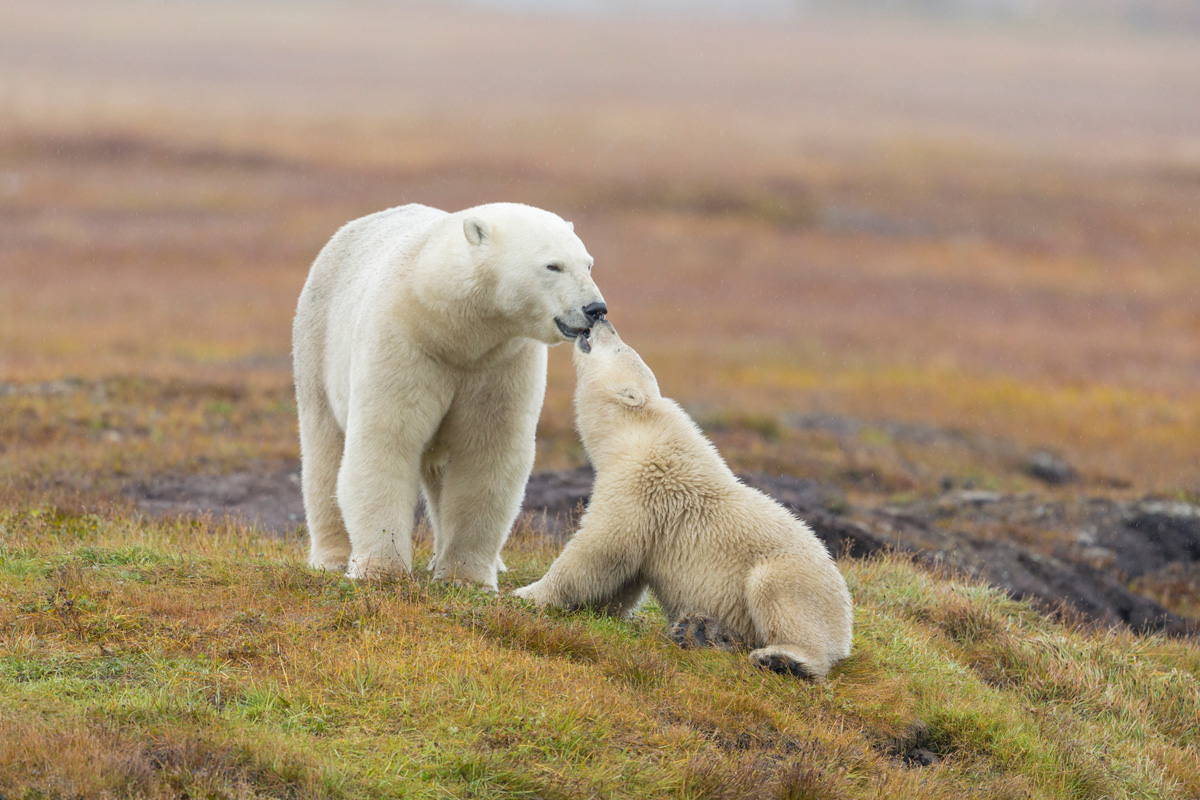
Trip Expectations
This tour focuses on the diverse photography opportunities in Alaska’s Arctic that range from macro photography of ice crystals to telephoto photography of wildlife. We cover a lot of geography and topography due to Alaska’s great size, so be prepared and willing to travel long distances in a vehicle.
- Skill sets vary among the participants from beginners to professionals.
- Group size is limited to 6 people
- One 12 passenger van used to offer sufficient space for photography.
- Each person has window access.
General photography occurs both from the vehicle as well as taking small forays across the tundra. Polar bear photography occurs from within a vehicle, and depending on weather conditions, from a small boat. We do not engage in extensive hiking but one should be in good shape and mobile enough to easily do the following:
- get around well on uneven and snowy tundra surfaces
- quickly enter and exit a vehicle
- straddle the side rail of a boat when entering and exiting
- navigate dimly lit, uneven surfaces at night when photographing the aurora
Photography Teaching and Instruction
We provide assistance throughout the trip regarding all aspects of photography. In addition to instruction in the field, there is generally time for small group discussions around a laptop in which we address topics like file management, image processing in Lightroom, proper exposure and other specific questions.
Day 1: Arrive in Fairbanks, Alaska
Travelers arrive in Fairbanks after flights from lower 48 states or other Alaska destinations. A shuttle van from your hotel (either Rivers Edge Resort or Pikes Waterfront Lodge, see your pre-trip email for details on your accommodations) will meet travelers curbside for the under 5 minute ride to where you will be staying on this first night of the trip on the banks of the Chena River.
We will meet you in the main lobby of the hotel at 6:30 PM for a pre-trip briefing, followed by a hearty Alaskan welcome diner at a local favorite restaurant!
During the pre-trip briefing we will have a discussion on the basics of aurora photography technique. When we return from dinner you can sign up for the “Aurora Wake-Up Call List” at the hotel main desk and perhaps have an opportunity to practice aurora photography on your first night from the banks of the Chena River.
Day 2: Drive North to Wiseman
After breakfast we will depart in one, spacious 12-passenger, customized Mercedes Sprinter van, driving north on what some people describe as the most scenic road in North America, the Dalton Highway. The Dalton or “Haul Road” as it is known to Alaskan truckers, was completed in 1974 so trucks could haul equipment and supplies to the recently discovered Prudhoe Bay Oilfields. The roughly 420 mile gravel road begins approximately 100 miles north of Fairbanks and is the only road that traverses the Arctic Circle in the United States. The first 100 miles of the drive is on the Eliot Highway, which traverses rolling hills in the White Mountains, before connecting with the Dalton Highway. The Dalton winds through mountainous terrain covered by boreal forest before crossing the Yukon River at mile 58. During late August and early September the hillsides along the Eliot Highway are carpeted in a blaze of fall color, yellows, oranges and reds that vary in intensity from year to year. Later in September we will see these colors fade into subtler hues as winter and snow overtake the land. From the Yukon River the Dalton climbs into the open alpine country of the Caribou and Ray Mountains passing by Finger Mountain and Kanuti Flats, home to a resident caribou herd. Shortly after passing through the open mountainous terrain around Finger Mountain the road crosses the Arctic Circle, where our crossing will be celebrated! Another hour of driving brings us to the south side of the Brooks Range, which will be at its peak of autumn color. The yellow of cottonwoods and birches, the red of blueberries and alpine bearberries and the orange of dwarf birch will create a tapestry of color that is spectacular and material for awe-inspiring scenic photos! As we enter the Brooks Range the Trans-Alaska Pipeline, which parallels the Haul Road becomes more apparent, standing on steel pillars, as it converges with the road corridor. A short drive later the road enters the Middle Fork of the Koyukuk River valley and we arrive at Coldfoot, the only truck stop on the five hundred miles of road between Fairbanks and Prudhoe Bay.
Coldfoot was a gold mining town at the turn of the last century and has the distinction of recording the greatest range of temperatures anywhere in the United States! A truck stop, diner and hotel, Coldfoot gives a unique look into the lives of truckers who make this 1,000 mile round trip year-round, even in the depths of winter when temperatures dip to 70 below zero! We will stop at the diner in Coldfoot to enjoy a meal at this backcountry outpost on North America’s most remote highway!
Our destination for the day is Wiseman, a turn of the 20th Century gold mining town that offers a glimpse into the recent human history of the south side of the Brooks Range. Located approximately 60 miles north of the Arctic Circle in the heart of the Brooks Range wilderness, Wiseman provides the perfect base for exploring and photographing this region. Accommodations in Wiseman may be considered slightly rustic, but are cozy and comfortable and the hospitality provided by our hosts, the Hicker Family at the “Arctic Getaway”, is legendary north of the Arctic Circle! Three main cabins where we stay, feature five well-appointed bedrooms, sitting areas, kitchen facilities and two full bathrooms that are shared by trip participants. Meals are served family style in the in the “dance hall” of the historic Wiseman community center. Away from the light pollution found to the south and directly under the band of latitude known as the “Auroral Oval” we will spend our first evening north of the Arctic Circle looking for and photographing northern lights (cloud cover permitting). If sky conditions and aurora cooperate we will stay up late into the evening and get a hands-on northern lights photography lesson. This will be the first opportunity for us to teach technique and composition of aurora photography in the field, and we will make the most of the evening if conditions are favorable.
Day 3: Explore the Brooks Range Wilderness Around Wiseman
This morning you will enjoy a more leisurely breakfast while you get to know your new surroundings. After breakfast you will set out for a day of exploring and photography on the south side of the Brooks Range. Autumn foliage will be at its peak with a blanket of color on the mountainsides. During the brief fall season wildlife of the arctic begins to prepare for the approaching winter, as the long hot days of summer, give way to shorter days with cool nights. It is not unusual for us to find both black and grizzly bears foraging for the last berries of fall, on the mountainsides north of Wiseman. Moose are starting their fall “rut” or mating season and caribou are on the move. As we drive north towards the continental divide of the Brooks Range you will watch the trees thin as the highway slowly climbs toward Chandalar Shelf and Atigun Pass, and approaches the northernmost edge of the tree line in Alaska. The “Shelf” and “The Pass” are the two main “hills” that the Dalton Highway climbs to gain access to the “Northslope”. The next few miles of the road climb dramatically to 4,800 foot Atigun Pass, the highest road in Alaska, and continental Divide of the Brooks Range. As you ascend Atigun pass you will enter the high alpine environment, home to Dall sheep, golden eagles and gyrfalcons! Snow may blanket the high mountaintops at this time of year or you may be looking at fall colors, as the first snow of winter can fall at any time after early September!
After a full day of photography and exploration you will return to Wiseman and “The Arctic Getaway” for dinner in the Dance Hall. After dinner, weather permitting, we will set up for our second night of aurora photography north of the Arctic Circle.

Day 4: Drive North to Prudhoe Bay and the Coastal Plain
After breakfast we will set out on the on the all-day drive to Prudhoe Bay or “Deadhorse” as it’s known, the hub of oilfield activity and the end of the Dalton Highway. The first section of the drive will cover the same territory we saw the day before, but we will be looking for new and different wildlife sightings.
Descending onto the north side of the Brooks Range from Atigun Pass we enter a different world devoid of trees, and home too many species of arctic wildlife, such as musk-oxen, caribou, grizzly bear, fox, wolf and moose. Many birds of prey can be found in the open tundra landscape of the Northslope, such as rough-legged hawk, short-eared owl, gyrfalcon and snowy owl. Additionally, many late departing migratory birds and residents such as greater white-fronted geese and willow ptarmigan are found along this section of road. We will budget our time to allow for numerous stops to photograph the scenery, wildlife and birds in this dramatic landscape. The Trans-Alaska Pipeline snakes over the open tundra parallel to the road and is a constant reminder of what lies at the end of the road on the coast of the Beaufort Sea in Prudhoe Bay. Our destination this night is “Deadhorse” or Prudhoe Bay the hub of oilfield activity and the location of the airport where we will catch our flight the next day. This night we will stay at one of the oilfield hotels that provide food and housing to visiting oilfield workers. This provides a unique view into the life of workers at North America’s northernmost industrial complex, and the place where roughly 20% of the US’s domestic oil supply originates from.
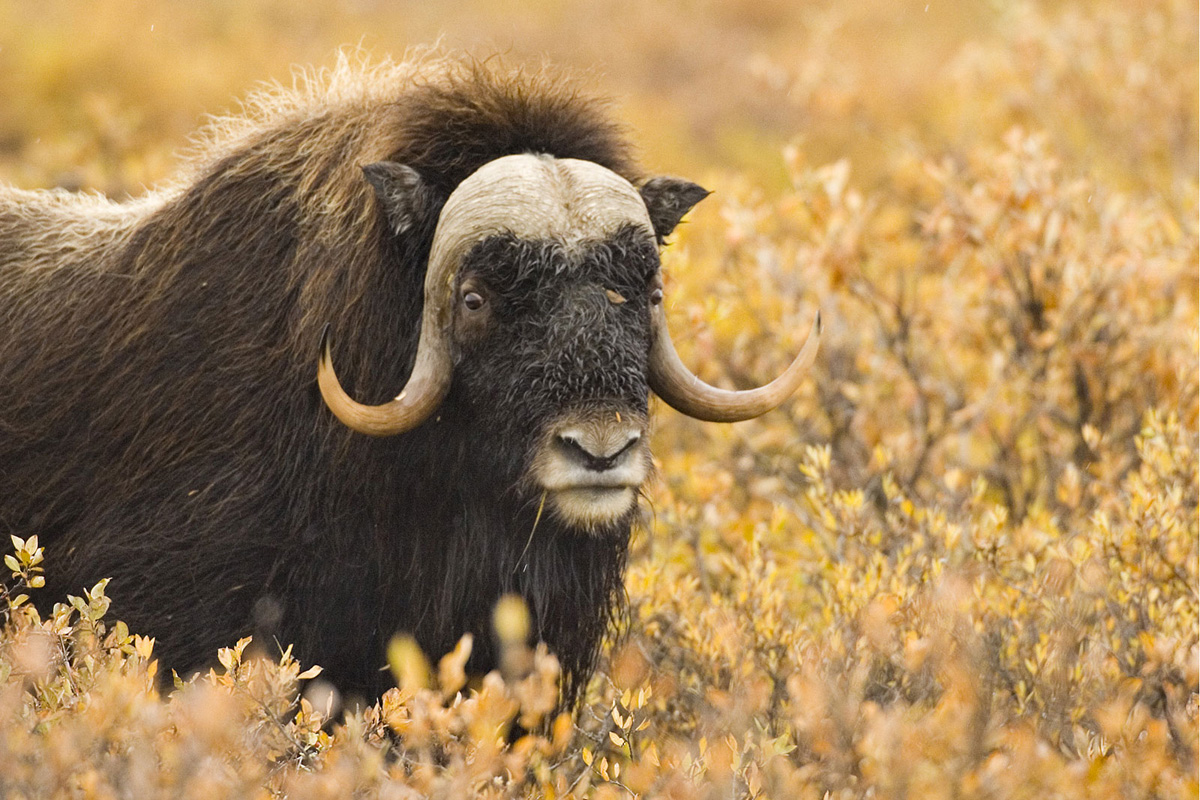
Day 5: Explore Prudhoe Bay and Fly to Native Village
After a hearty breakfast at the oilfield hotel we set out to explore the area around the Prudhoe Bay oilfields. Many of the species of migrant waterfowl that rear their young in this area can be found on the myriad of lakes and ponds that dot the landscape. Birds such as pacific loon, tundra swan and red-throated loon will soon be departing on their journey south and can be found staging on ponds. Short-eared and snowy owls hunt the open tundra for voles and shrews, while arctic and red fox stalk ptarmigan and lemmings in the dense low growing willows along streams. The abundance of both bird and mammal life in this harsh landscape is amazing and a photographers dream. We will spend our available time this morning exploring and photographing this area before we return to Deadhorse to catch our flight.
Mid-day we will proceed to the bustling Prudhoe Bay Airport and get checked in for our flight to the native village. Luggage weight and size will be restricted on this flight to 60 pounds total per person (including camera gear) so everyone will consolidate their gear and take only what is needed for the next three nights on the arctic coast. Gear should consist of necessary camera equipment and small duffel with tooth brush, change of clothing and cold weather gear (Hugh supplies appropriate size duffels for people needing them). Arctic weather conditions will be encountered, so suitable clothing and gear will be needed, please see the gear list at the end of this itinerary for what is necessary.
The short (35 minute) flight takes us over the spectacular arctic coastal plain and the well- known if not controversial “1002” area of the Arctic National Wildlife Refuge (ANWR). Depending on the altitude flown at, we may see wildlife on the tundra or bowhead whales as they migrate west along the Beaufort Sea coastline. Upon arrival in the Native Village in early afternoon we will be transported from the village airstrip to our accommodations for the next three nights. Although our lodgings are not luxury, what they lack in appearance is made up for in hospitality and a certain charm. Built from modular oilfield camp buildings the Inn is basic yet comfortable. Accommodations are in double rooms with twin beds, bathrooms with showers are located down a short hall. All our meals are prepared and eaten in the café located on site and are always hearty and tasty! Our schedule will depend on weather and individual interests, but the best photography tends to be early in the morning and later in the evening, so we will try and schedule meals around our photographic forays! While on the Beaufort Sea coast we will be photographing polar bears in the Arctic National Wildlife Refuge where we operate under a special “Polar Bear Viewing Permit” through US Fish and Wildlife Service. Polar bear viewing and photography will be both land and water based. For the water based forays we will be going out for 3 hour rides, 6 people at a time, with your guide and a local boat driver on the sheltered lagoons that surround the island where the village is located. For land based activities we have a large and comfortable bus with many opening windows, which provides a safe and convenient platform to observe and photograph the bears from. After lunch we will set out on our first boat ride to the barrier islands just offshore where bears tend to lounge during the daylight before swimming to the island to feed on whale remains in the evening.
A few words about the native village
We will be visiting a native village inhabited by approximately 250 Iñupiaq indigenous people who are endemic to this region of arctic Alaska. The village is located on a small 3 mile by 2 mile island just off the arctic coastline. This Island was an important stop for whalers at the turn of the last century, but did not become a permanent settlement for the semi-nomadic Inupiat people until 1923 with the establishment of a fur trading post by a Nantucket whaler who married a local indigenous woman. The island is characterized by a large saltwater lagoon that is located on the east side of the island and provides a sheltered anchorage for the village fishing boats. The downtown consists of a cluster of homes built on the barren tundra approximately one mile from the village airport. There are limited roads and vehicles located in this village, but a vehicle is necessary for travel and photography of the polar bears. Keep in mind that we are visitors from a different culture to this village, and our sense of time and schedule may be different than the resident’s. Experiencing the culture of the Iñupiaq is as much of an experience as watching the polar bears!

Why are Polar bears (Nanuq) here?
The circumpolar indigenous people of the world have been hunting marine mammals and whales for thousands of years and the Iñupiaq of Alaska are no different. In a very tightly controlled hunt, arctic coastal villages of Alaska are allowed to hunt the bowhead whale, which frequent the waters of the adjacent Beaufort Sea/Arctic Ocean. A whale harvest quota is awarded to each village according to number of residents and the historic harvest.
The Iñupiaq name for the polar bear is “Nanuq” and the normal domain of Nanuq is not the beaches and tundra of the arctic coast, but the pack ice that covers the sea surface for 9 months of the year. Polar bears feed mainly on seals that live on and under the arctic ice, hunting them using a number of different techniques. Like their cousins the brown bears from which they evolved, during times of hunger, polar bears can be opportunistic and will feed on whatever food opportunities are present. Other food sources can include vegetation such as grass, small rodents, bird eggs, other marine mammals and scavenging on carrion. Polar bears are attracted to this area to scavenge on the carcasses of butchered whales, and begin to arrive here before the annual whale hunt begins on Labor Day each year. In mid-summer when the arctic pack ice moves off shore, Beaufort Sea polar bears are often marooned on shore where there is little to eat. These bears enter the fall season hungry from lack of readily available food and have learned that whale blubber is available in this area starting in early September. A bear’s memory is so good they will remember the time and place where food was available and return to that same spot the next year at the same time. The bears typically arrive in late August before the whale hunt begins, and will scavenge on the remains of whale carcasses from previous year’s hunts. We will be visiting this area during the annual hunt and if we are fortunate we may witness the community event that surrounds the harvesting of a whale.
Day 6 + 7: Photography and Bear Viewing
These two days will be spent viewing and photographing bears and other wildlife that inhabit this area, both from a boat and from the bus on land. You are scheduled for a total of 18 hours of boating during your stay (weather dependent), spread out over 5 or 6 boat rides. The polar bears are resting, playing, nursing, sleeping and socializing on a barrier island located immediately off shore, so the actual boating time and distance to where we photograph the bears is short (less than a half mile). The boat excursions are typically scheduled as 3 hour trips every morning and evening (including the trip on the afternoon of your arrival day and the morning of your departure day. Boat trips are weather dependent, but if wind or fog does not allow the boats to operate we have the bus to take you out for bear photography on land.
We will have opportunities to explore the island during our search for bears and other wildlife and may see snowy owl, arctic fox, and even grizzly bear. If we are fortunate, we may have the privilege of witnessing the bowhead whale harvest. If this is the case we will be allowed to watch this rarely observed Iñupiaq tradition. Observing this cultural event will be completely up to you as the travelers, but this would be a unique opportunity to witness something that few ever get to see. We will have to exercise cultural awareness on this subject and will not be able to photograph the people involved. It is important that you ask if photos are permissible anywhere in the village.
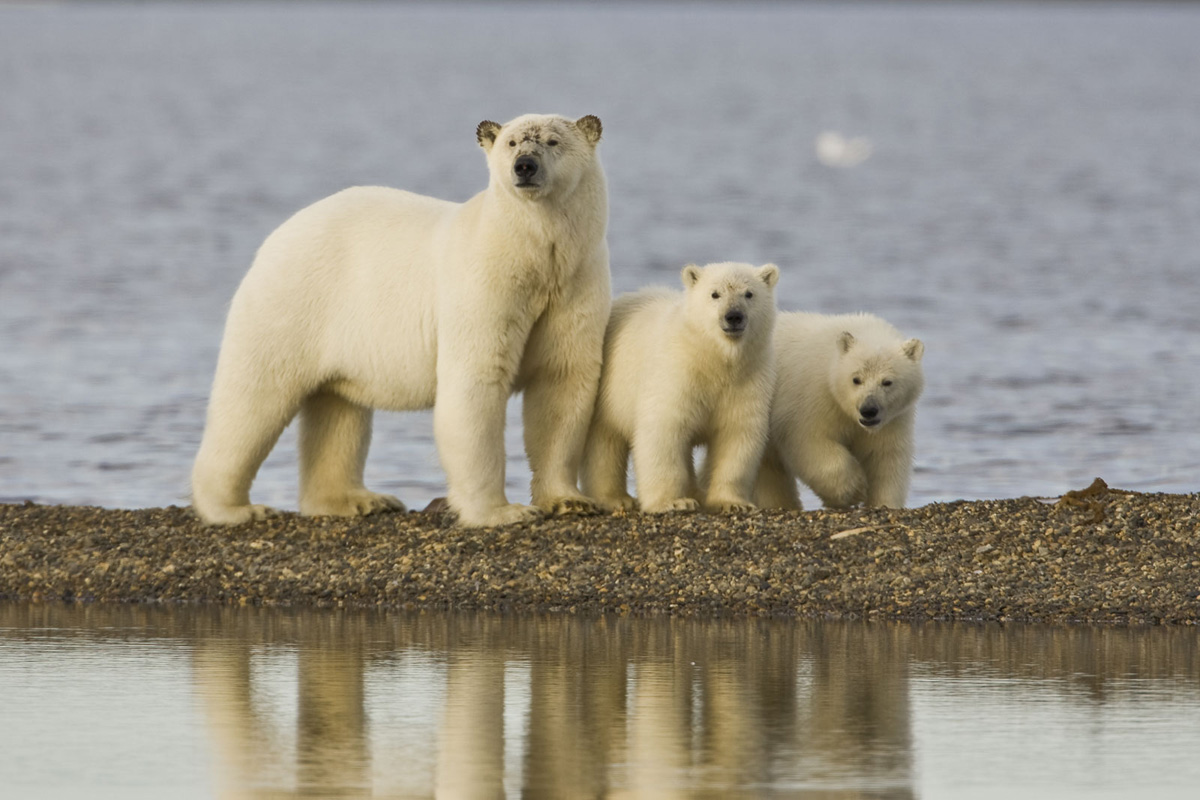
Day 8: Return to Prudhoe Bay and Drive South Back to Wiseman
This will be a long day of travel and our last opportunity to observe and photograph the bears before we depart midday. We will head out early on our last bear viewing foray, staying out on the boat until mid-morning. After a quick return to the hotel to use the restrooms and eat a light lunch we will board our airplane for the flight back to Prudhoe Bay and arrive in Prudhoe in early afternoon **(see special travel note in the information section at the end of this itinerary). Upon arrival at Deadhorse we will pick up a picnic lunch and start our drive south towards Wiseman as soon as possible. The goal is to spend as much time as possible exploring the area of coastal plain that we had to pass by earlier in the trip on our drive north to Prudhoe Bay. This will be our best opportunity to photograph muskoxen and we will make sure that we leave time to spend with these amazing prehistoric creatures. In addition we will be watching for other wildlife in this unique landscape, such as caribou, grizzly bear, moose and fox. This time of year the sunset light is long and the day lingers late into the evening hours. We still have a long drive ahead and with photography stops will not reach Wiseman until later in the evening. After the sun sets we will keep our eyes peeled for the aurora, as this may be an excellent opportunity for aurora photography in the high peaks of the Brooks Range!
Day 9: Explore Around Wiseman
The beginning of this day will be marked by a leisurely morning in order to give everyone an opportunity to rest after the previous long day of travel and if weather permitted, aurora photography. After breakfast a “local” will take you on a walking tour of Wiseman. Bring your camera to photograph some of the historic gold-rush era cabins and antique steam-powered gold mining equipment. In the afternoon some of you may choose to continue exploring the local area around Wiseman, or you can choose to spend a last afternoon looking for wildlife or photographing along the Dalton Highway on the south side of the Brooks Range. On this afternoon, we can focus on whatever interests you, whether it is the mining history of the Wiseman area, looking for mammals or absorbing and photographing the stunning scenery on the south side of the Brooks Range! This evening will be spent searching the arctic night skies for aurora one last time and finding the ideal location for you to compose aurora photographs!
Day 10: Drive Haul Road South, Return to Fairbanks
After our last breakfast at the Arctic Getaway and final photos around Wiseman we will bid our hosts goodbye and depart for the drive south to Fairbanks. As with the drive north, we will maximize wildlife viewing and photographic opportunities during this day of travel. Upon arrival in Fairbanks we will check in at the Fairbanks hotel, get cleaned up from a day on the road and head out to our farewell dinner at a fine local restaurant.
Day 11: Flights Home
After breakfast this morning you will be transported to the Fairbanks airport for your flight home or on to other destinations in Alaska.
**Special Travel Note About the arctic:
In the unlikely event that our return flight from Barter Island to Prudhoe Bay is cancelled due to weather or other circumstances beyond our control (such as mechanical problems with aircraft or flight cancellations), an additional fee of $450 (estimated November 2018 and subject to change) per person will be charged for each additional night that we have to stay in Kaktovik. This covers the extra cost of staying in the village and the cost of a rental vehicle so we can make the most of the situation and continue to view and photograph the bears. Although departure delays are infrequent, it has happened a few times over the years we have been running tours. We apologize in advance if it becomes necessary to collect this additional fee, but weather and other conditions in the Arctic can be unpredictable and beyond our control.
We reserve the right to charge for cost increases that occur between when we set tour prices and the date of travel, for example, changes due to the cost of lodging and transportation. If you are a single traveler and you are willing to have a roommate, we will find a roommate for you, and if we cannot, we will not charge you a single supplement fee. Single rooms are subject to availability and cannot be guaranteed throughout the trip.
Included in the price:
- All activities, leaders, transport, park entry and user fees, landing fees and permits.
- Accommodations for the nights of Aug 29 through Sep 7.
- Meals from dinner on Aug 29 through breakfast on Sep 8
- Round-trip flights between Prudhoe Bay and Barter Island, where we view polar bears.
- Airport transfers to/from Rivers Edge Resort and Cottages on Aug 29 and Sep 8 in Fairbanks.
- Complimentary beverages (wine, beer) in Wiseman.
- Trip Materials – information about flights, packing, entry and departure requirements, airport transfers, gratuities, etc.
- Warm insulated Arctic Muck boots, for use during the trip.
Not included in the price:
- Airfare to Fairbanks, Alaska from your home, airport and departure taxes, and excess baggage fees.
- Separate Airport transfer fees if booking extra nights in Fairbanks before Aug 29 or after Sep 8.
- Gratuities for your Guide Ron. Tipping is of course discretionary, however we suggest budgeting a total of $200 per participant for Ron and $50 to $60 for your boat driver in Kaktovik
- If necessary due to travel delays, cost of lodging and transportation in Kaktovik of $450 per person per additional night, to be paid at the end of the tour
- Emergency medical and evacuation insurance and trip cancellation insurance.
- Items of a personal nature such as laundry, telephone calls, medical costs or hospitalization, room service, alcoholic and other beverages, items not on the regular menu, etc. If you have special dietary needs, please indicate them on your Reservation/Release Form.
Payment, Reservation & Cancellations:
Payments will be due based on the schedule below. All reservations require a deposit to confirm reservation of your space. For reservations made after a due date, all past payments will be due with registration. By sending your initial deposit, you agree to accept our payment schedule and cancellation policy as a contract. If payments are still outstanding two weeks after the due date, your space may be forfeited.
- Deposit: Due to reserve your space $1,000
- Second: January 15th, $4,225
- Final: April 15th, Remaining Balance
Cancellations
Until the Second Payment due date, deposits are refundable except for a cancellation fee of $250 per person, which can be applied toward another tour if reserved within six months of the cancelled trip’s departure date. Cancellations are non-transferrable. No refunds are given after the Final Payment due date, unless we can fill the space(s) you have reserved.
Trip Insurance
Important Disclaimer-Weather Related Travel Delays
In the unlikely event that our return flight from Barter Island to Prudhoe Bay is cancelled due to weather or other circumstances beyond our control (such as mechanical problems with aircraft or flight cancellations), an additional fee of $450 (estimated November 2019 and subject to change) per person will be charged for each additional night that we have to stay in Kaktovik. This covers the extra cost of staying in the village and the cost of a rental vehicle so we can make the most of the situation and continue to view and photograph the bears. Although departure delays are infrequent, it has happened a few times over the years we have been running tours. We apologize in advance if it becomes necessary to collect this additional fee, but weather in the Arctic can be unpredictable.
Hugh Rose
Hugh Rose has photographed and lived in northern climates most of his life with the latter part of it in Alaska. Compelled by Alaska’s natural beauty, he left a 10-year…
Bill Mohrwinkel
Bill has lived and guided in Alaska for 25 years. He has extensive experience throughout Alaska including being part owner of a guiding business in the Arctic for 10 years,…
Gear, Equipment & Clothing
We will supply a comprehensive PDF that details our recommendations for camera gear and clothing after booking.
Lenses and Tripods
- A telephoto lens in the range of 400-500mm is recommended (in conjunction with a 1.4 and/or 2x converter as necessary). 600mm lenses are very large, heavy and hard to handle quickly, and are generally not recommended unless you are very adept at handling it.
- A wide angle lens with a minimum of 24mm f/2.8 is essential for photographing the aurora.
- Tall tripods and fast (f/2.8 or faster) wide angle lenses (at least 24mm wide) are essential for effective aurora borealis photography.
- Wimberley tripod heads do not work for aurora photography, and due to the more spontaneous nature of the wildlife photography we encounter, a general good ballhead is strongly recommended.
What are the odds of seeing the aurora borealis (and the polar bears for the October trip)?
- While we can’t guarantee things beyond our control, this question is best answered by past experience. To date we have about a 90% rate of seeing and photographing the aurora and 100% rate of seeing and photographing the Polar bears. Weather is an inhibiting factor for the aurora since clear skies are required, it is less of a factor for viewing and photographing polar bears. Every year is different, but every trip delivers many outstanding viewing and photographic opportunities.
Which trip date should I take?
- This is a common questions that we receive all the time, and understandably so. There are some general differences between the trips and it mostly comes down to weather. The month of October is a seasonal transition month and the weather changes are variable as the cold of winter begins to move in. For example: Early October has more daylight, is generally warmer, frequently has less snow, and more open water is present. Later October has less daylight, is generally a bit cooler, often has more snow, and rivers and open water can be frozen over. They are both excellent times with slight variations. For some, the phase of the moon may be a deciding factor, for others, they may want open water opportunities for aurora reflections. But there is great variation in the weather overall, so please take this into account.
Do I have to be an experienced photographer?
- No. While the trip is geared for photo opportunities and interests, it is not uncommon for one spouse to be more interested in photography, while the other enjoys the scenery and watching the wildlife. This is fine with us. However, a word of caution to the non-photographer: photographers tend to be pretty intense in their pursuits so keep in mind that this is the major focus of the trip.
Lodging and Airport Pickup
- Your hotel accommodations in Fairbanks, located just a mile from the airport, offer pick and drop off service for free.
- Lodging in the Brooks Range is in a very comfortable and rustic log cabin with shared bathrooms. It gets a complete 5 star review on Trip Advisor.
- Lodging in the high Arctic during the polar bear segment includes one night in an industrial hotel (very clean and comfortable) and three nights at a hotel in Kaktovik, which is warm and friendly, with shared bathrooms.
Climate
- Keep in mind the Arctic has ever changing weather with temperatures that can swing from below freezing to warm in a matter of hours at this time of year.
- In October, expect daytime temperatures in the 30’s and 20’s (perhaps as high as the 40’s) with nights below freezing, depending on location. Both rain and/or snow are possible, although rain is less likely.
- In March, the temperatures on average are much colder, with possible low temperatures reaching minus 30 degrees. Snow is possible.
Regional Books of Interest
- Arctic Village by Bob Marshall – a summary of the community of
Wiseman in the early 1900’s, which specifically mentions the historic
B&B where we will be staying. - The Brooks Range, the Ultimate Mountains by John Kauffman. It is a good read on the history of the area and the value of wilderness in the north.
- Two in the Far North by Margaret Murie – Memoirs of a wilderness
advocate with tales of her life in the early pioneer days of Alaska,
namely Fairbanks and scientific exploration in Alaska’s Arctic. - Ordinary Wolves by Seth Kantner


